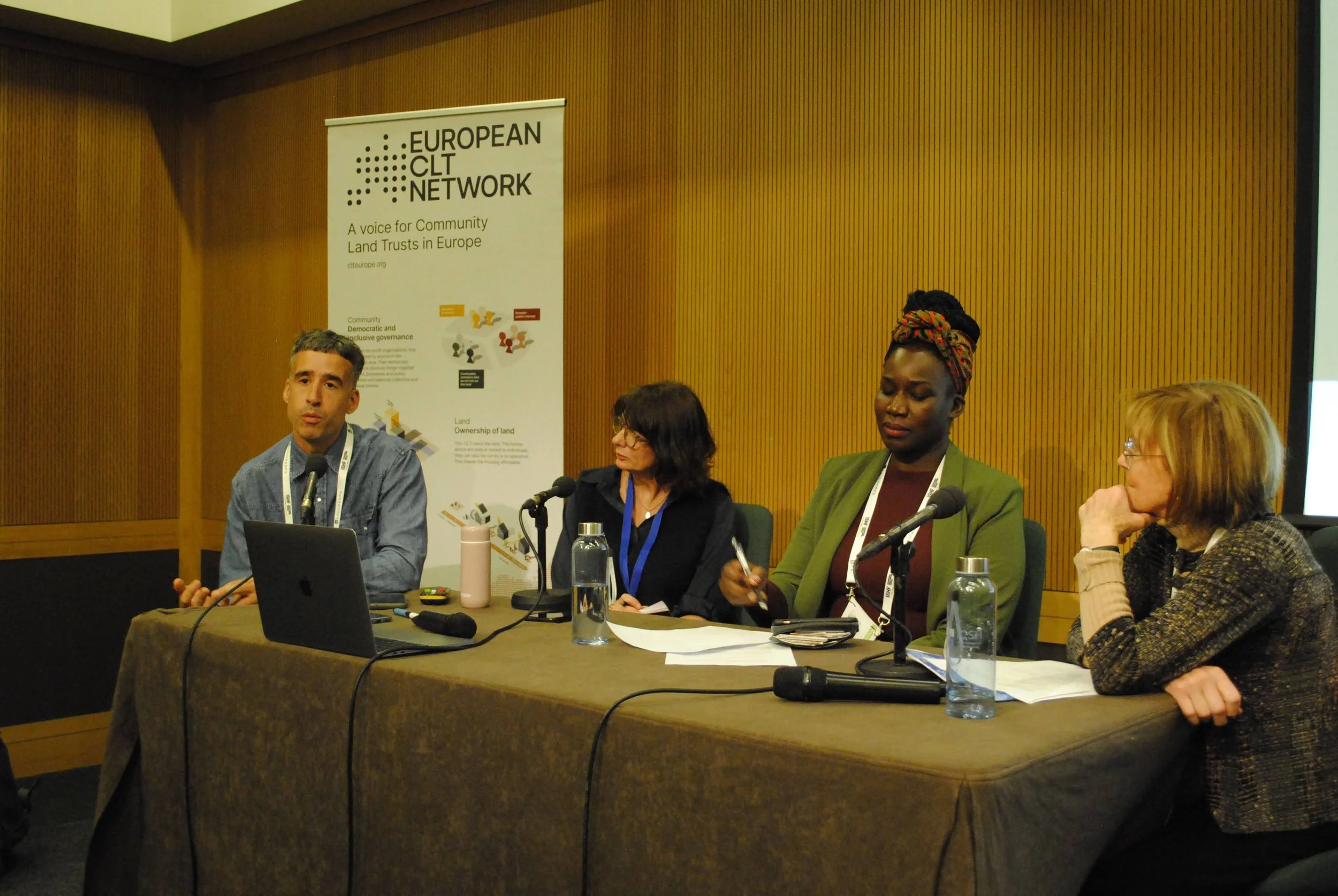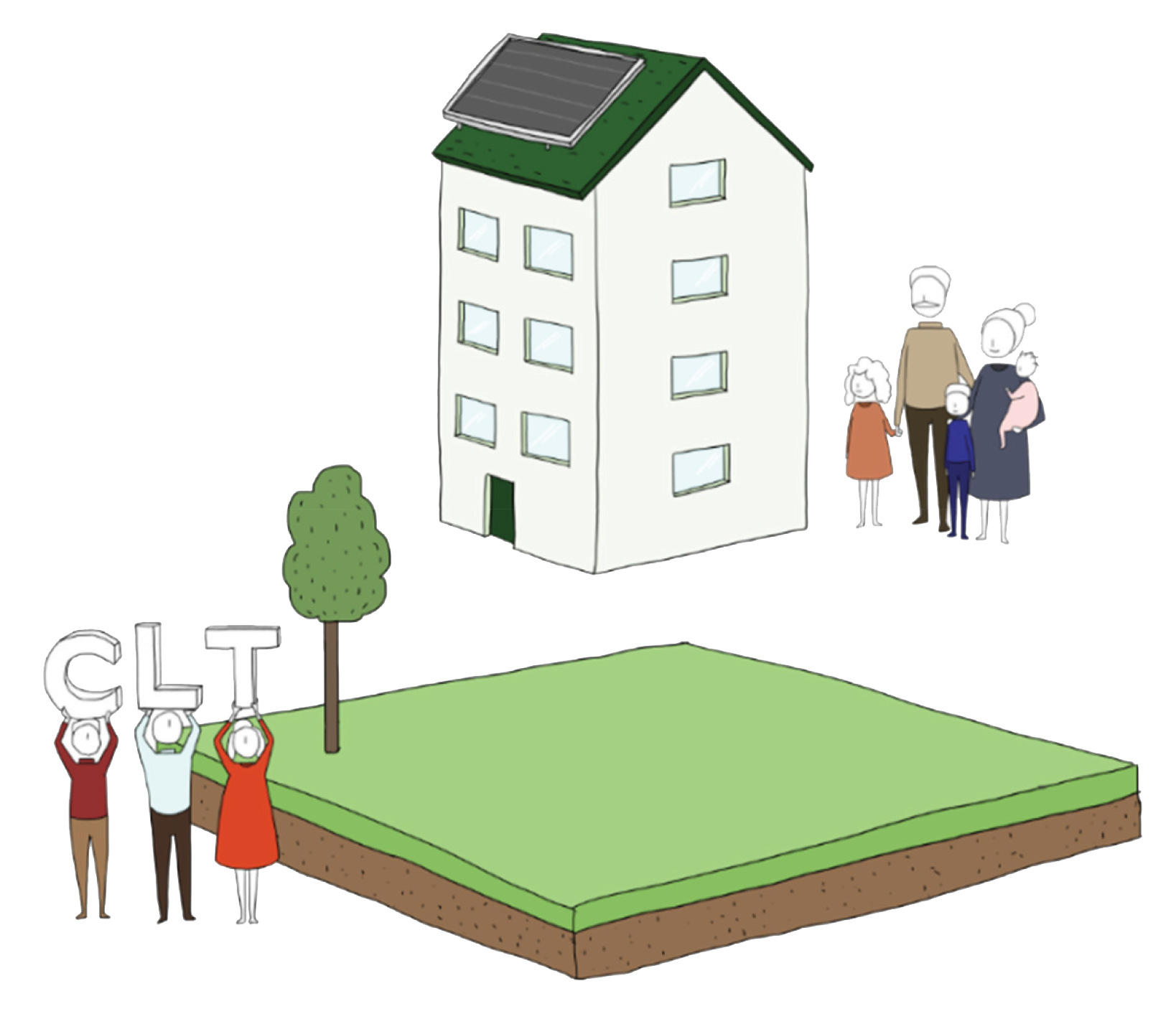Part 1. Justice Through a Commons-Based Approach to Land
Emergence of CLTs: from repairing historical injustices through land use to creating the conditions for material safety
In June 2025, Community Land Trust (CLT) practitioners from across the world gathered in Dublin for a session organized by the European CLT Network in collaboration with the International Center for CLTs during the International Social Housing Festival.
"Justice through a commons-based approach to land" was the topic that set the tone for all panelists in describing how they work, their journey, and their challenges. It is also the principle that guides all CLTs, however diverse they are. From the US civil rights era to their evolution into a replicable, adaptable, strategic innovation, CLTs have embedded this idea of separating land ownership from homeownership as a way to secure the right to housing. Permanent by design, it is this commons-based, justice-oriented vision that underscores the growing success of Community Land Trusts worldwide.
CLTs originated as a tool for political justice and reparation, and while their political action remains central to their development, the stability of the democratic, typically tripartite governance model is what truly enables them to remain inclusive and permanently affordable even through changes in geography and scale. From Ireland to the US, from the UK to Catalonia Spain, social learning and innovation have guided their equitable expansion, balanced with a careful eye on institutionalization and staying true to the roots of the model.
But at a time when the housing crisis is on the cover of newspapers everywhere, a pressing question remains: how can CLTs reconcile the need for scaling and their commitment to democratic governance?
Brenda Torpy, Co-Chair of the International Center for Community Land Trusts opened the panel by situating the emergence of CLTs within their broader historical and political framework.
Far more than a tool for housing affordability, the CLT movement was born out of political resistance and rooted in global traditions of land reform and collective ownership. Drawing on the economic philosophy of Henry George, who argued that, to eliminate poverty, land should be held in trust for the common good rather than private ownership, the roots of the movement in the United States are inseparable from the struggle for civil rights and racial justice.
Origins of CLTs: the civil rights movement
At the height of voter suppression, Black farmers who leased their land were often evicted simply for registering to vote. Organisers and activists were systematically priced out of political participation, revealing land tenure as both a site of oppression, and a potential instrument of liberation. From this crisis came the strategic innovation of the Community Land Trust: a model designed to resist exploitation while sustaining community power. Considered the first CLT, New Communities, Inc, was founded in Georgia, USA, in 1969.
The first community land trust (CLT), New Communities, Inc., was established in the late 1960s by a group of civil rights activists.
© Cork CLT
Through the introduction of the ground-lease mechanism, which separated land ownership from homeownership, CLTs secured both affordability and political agency. By embedding permanence into their legal framework, CLTs transformed landholding into a tool of protection, ensuring that community purpose could endure across generations.
The structure and legal framework of community land trusts is based on the idea of the commons, of land as a resource for the community. According to Brenda Torpy, it lies at the heart of the CLT philosophy, structure, and purpose. She underscored what is, to her, the reality of modern housing markets: the real cost of housing-as-investment means the destruction of communities, as rising housing costs shift from being a symptom to becoming a driver of economic hardship.
Translation and the Expansion of the Movement
“Community Land Trusts are about turning land into a platform for justice. [They] bring us back to a very simple yet radical idea: that land should serve people and not profit.”
Keti Tskitishvili, Director of the European CLT Network
From the struggles of US farmers in the 1960s to the experiences of European partners and housing activists, the CLT movement illustrates a process of global knowledge transfer, always anchored in that radical idea: land should serve people, and not profit. The panel discussion highlighted how the original US experiments have been adapted and reimagined internationally, demonstrating both the resilience of the model and its capacity to respond to evolving social and political challenges. The presence of CLTs from Cork to Barcelona testifies to this adaptability and to the urgency of reimagining housing structures everywhere.
With the financialization of housing accelerating, homes are increasingly treated as commodities rather than as a right. Panelists agreed that this trend threatens communities themselves, most sharply articulated by Juliet Can, board member and resident of London CLT.
Recounting her family’s migration from Uganda to London in the 1990s, Can reflected on how she and her activist group, TELCO (now Citizens UK) turned to the CLT model as a way to build “something that was permanent, affordable, and sustainable.”
“Belonging is more than just a feeling, it is security, and basic human rights.”
Juliet Can, CLT London
Beyond sentiment, the idea of community for Juliet Can is rooted in material safety: permanent, affordable housing creates the conditions for thriving and secures intergenerational protection. Her testimony illustrates how the model, through its translation from one continent to another, is still very much anchored in political activism—and how essential that activist role remains for the development of the CLT movement today.
Building the Conditions for Long-Term Community Control
To ensure that a grassroots initiative results in long-term community control, the key challenge lies in creating systems that are both permanent and structured. While CLTs are embedded in bottom-up frameworks, both Torpy and Can, reinforced by the experiences of other panelists, highlighted the importance of political backing and supportive policy. From resistance to resilience, the movement must continue working with policymakers and industry partners to design systems that keep housing permanently affordable, while ensuring that community roots remain strong even amid market pressures.
By creating both housing and political capacity, CLTs transform the fight for housing into the fight for belonging, security, and justice. In doing so, they build power, opposing short-term real estate interests through durable structures of community ownership, underpinned by community action and political will.


